





SOUTH-WESTERN OREGON

Four Days in May - Len Blumin's photos and notes
1. Calliope Hummingbird
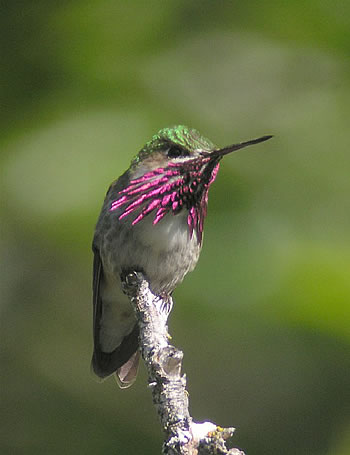
Here's the Calliope Hummingbird that posed so nicely for us at Tolman Creek Road. Check out the little feet. Photo a bit soft from motion and slow shutter, but the color came through.
2. The Color of Ibis
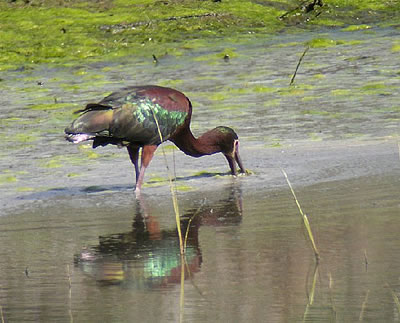
The iridescence of the White-faced Ibis depends greatly on the angle at which the light strikes the feathers. This shot shows well how greatly the color can vary. We even see a bit of the "white face". Wonder why this color pattern, i.e. a border of white feathers where the bill joins the face, is seen in some many unrelated species, such as Scaups, White-fronted Geese, Ibis and others.
3. Merganser Chicks
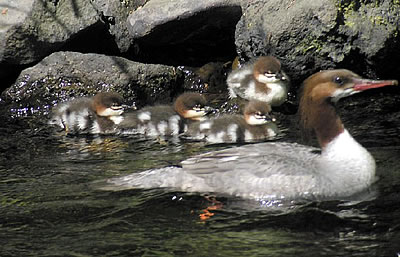
Others in our group had better luck with the Common Merganser family at Burney Falls, but some of you were not there, so I thought I'd share my sub-optimal shot. Mom is just about to swim out of the picture!
4. Green-tailed Towhee
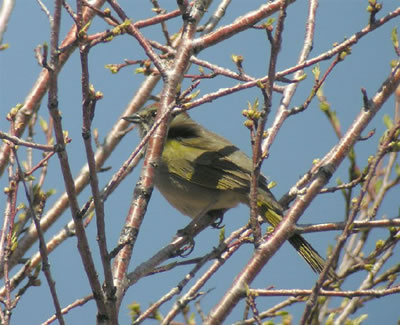
The branches obscure some of the field marks, but create a more "natural" look, and we can see the olive-green of the wings and tail, along with a hint of the rufous crown.
5. Green-tailed Towhee
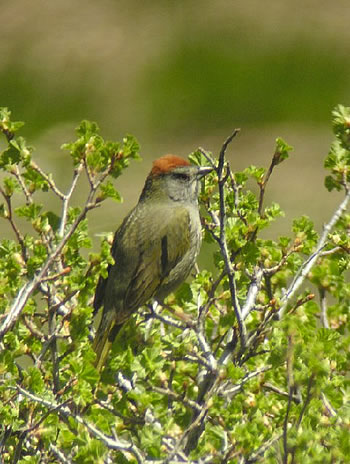
Took a bunch of shots when he was teed up and singing, but none of them were very sharp. Here at least we get a good idea of the color of his crown. I'm assuming it is the male because of the territorial singing.
6. Spotty in a tree
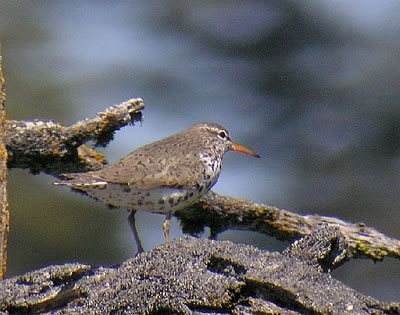
Much to our delight, the Spotted Sandpiper landed in a dead tree and stayed for a bit. Not real close, but close enough to see all the features of its full alternate (breeding) plumage. Patti pointed out to me that he even develops spots on the back and wings, along with the expected spotting on breast and belly. Note also that the bill develops a rich orange color. Cool bird, this one.
7. Screech Owl on Granite Street
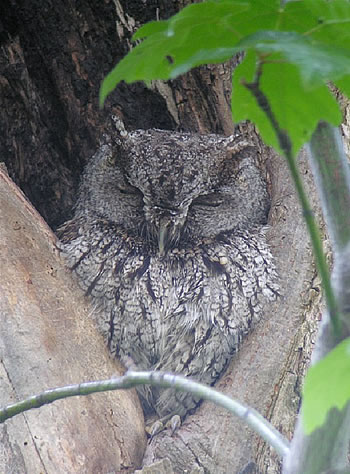
One of the first birds seen on the recent GGAS trip led by Harry Fuller was this fine Northern Screech Owl, in a tree not far from our motel in Ashland, and just a few houses down from the Fuller residence. Minimal light on the bird, but a good tripod and self-timer on the camera allowed for a decent capture. Glad we checked it out that morning, as it was not present when the tree was checked on several other occasions. This is presumed to be the Gray "Pacific" race. Eastern Screech Owls can be much redder or browner.
8. Lincoln's Sparrow
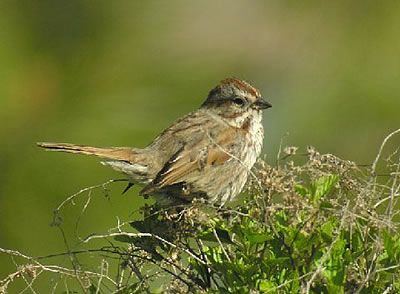
I never get good enough at Lincoln's Sparrow's to be sure of the I.D., but this perched bird fits the bill, with his rufous malar strip, broad gray supercillium and narrow crown stripe. Corrections welcomed!
Thomas Lincoln was with JJ Audubon on one of his collecting trips, and named the bird in his companion's honor (Dictionary of Birds of the United States).
9. Yellow-headed Blacbird in a Willow
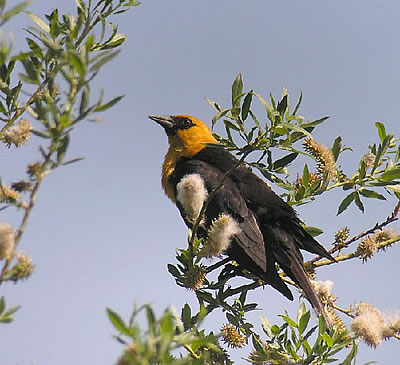
We saw scores of Yellow-headed Blackbirds in the distant marsh vegetation at several locations, but this one perched in a willow to give the photographers a chance for a shot. Cool birds, with unusual vocalizations.
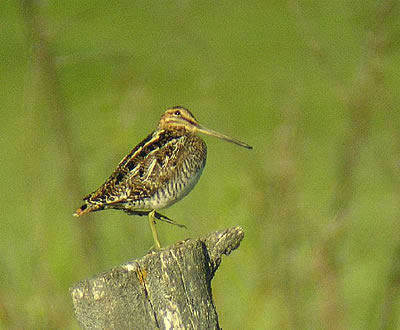
Harry said to "check the posts for Snipes", which we dutifully did and were rewarded with a single individual who perhaps was the only one left who hadn't found a mate. I had never seen a displaying Wilson's Snipe before, so this was a treat. Later in the trip we were thrilled to hear the eerie sound of winnowing snipes. Detail here a bit soft because of the distance. These shy birds will flush if approached, so we kept our distance. Note how he has tilted his head a bit to look directly overhead to check for raptors.
11. Western Kingbird
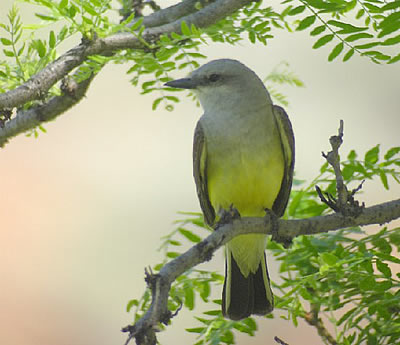
We saw several Western Kingbirds during the trip, but I don't like to take photos of birds on wires unless they are really special. On our drive up we stopped at the Klamath Rest Stop, just before entering Oregon. A Western Kingbird posed in a more natural setting. The greening shade produced some interesting colors, which I opted to leave untouched.
12. White-breasted Nuthatch
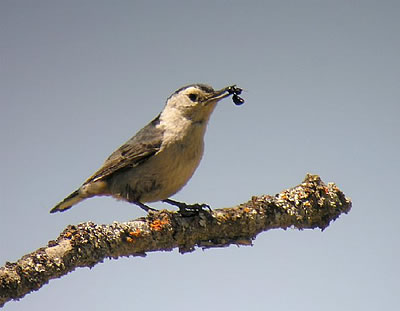
We dipped on the Dipper along this farming road, but fine views of the White-breasted Nuthatch and some friendly horses nearby made up for the dipper-disappointment. I think the Nuthatch may have a carpenter ant to feed its nestlings.
TOWHEE.NET: Harry Fuller, 820 NW 19th Street, McMinnville, OR 97128
website@towhee.net